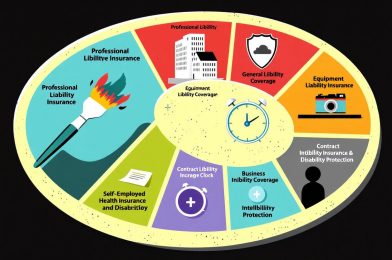Understanding Tech Company Equity: Stock Options and RSUs Basics
Introduction to Tech Company Equity
As a software developer in the tech industry, understanding your equity compensation is crucial for maximizing your total compensation package. Whether you’re at a startup or an established tech giant, equity can represent a significant portion of your wealth-building opportunity.
Types of Equity Compensation
Stock Options Explained
Incentive Stock Options (ISOs)
- Tax-advantaged employee stock options
- Usually offered by startups and growth companies
- Exercise price set at fair market value
- Maximum term of 10 years
- Must be exercised within 90 days of leaving company
Non-Qualified Stock Options (NSOs)
- More flexible than ISOs
- Can be offered to contractors and advisors
- No special tax treatment
- Variable exercise price
- Longer exercise windows possible
Restricted Stock Units (RSUs)
Key Characteristics
- Actual shares of company stock
- No purchase required
- Value tied directly to stock price
- Common at public companies
- Taxed as ordinary income when vested
Common RSU Structures
- Public Companies
- Quarterly vesting common
- No purchase requirement
- Immediate liquidity
- Market-based valuation
- Pre-IPO Companies
- Double-trigger vesting
- Time-based requirements
- IPO or acquisition requirement
- Limited liquidity
Understanding Your Grant
Stock Option Components
Exercise Price
- Also called “strike price”
- Set at fair market value
- Determined by 409A valuation
- Fixed for the life of the option
Grant Size Benchmarks
Entry Level Developer:
- Startup: 0.1-0.25% equity
- Growth Stage: 0.01-0.1% equity
- Public Company: $100K-200K RSU value
Senior Developer:
- Startup: 0.25-1.0% equity
- Growth Stage: 0.1-0.5% equity
- Public Company: $200K-500K RSU value
Lead/Principal Developer:
- Startup: 1.0-2.0% equity
- Growth Stage: 0.5-1.5% equity
- Public Company: $500K-1M+ RSU value
Vesting Schedules
Standard Four-Year Schedule
- One-year cliff (25% vests)
- Monthly or quarterly thereafter
- Full vesting at four years
- Reset on promotion/refresh grants
Example Schedule:
Initial Grant: 10,000 shares
Year 1 (cliff): 2,500 shares vest
Years 2-4: 208 shares vest monthlyRefresh Grants
- Additional equity grants
- Usually annual
- Performance-based
- Maintains retention value
Valuation Basics
Private Company Valuation
409A Valuations
- Independent assessment
- Updated every 12 months
- Affects exercise price
- Used for tax purposes
Preferred vs Common Stock
- Preferred: Investor shares
- Common: Employee shares
- Liquidation preference
- Conversion rights
Public Company Valuation
Market Price Considerations
- Real-time stock price
- Trading volume
- Market volatility
- Company performance
RSU Value Calculation
Formula:
- Number of RSUs × Current Stock Price
- Less applicable taxes
- Consider vesting schedule
- Account for blackout periods
Risk Assessment
Private Company Risks
Liquidity Risk
- No public market
- Limited selling opportunities
- Transfer restrictions
- Long holding periods
Valuation Risk
- Company performance
- Market conditions
- Future funding rounds
- Exit timing
Public Company Risks
Stock Price Volatility
- Market fluctuations
- Industry trends
- Company performance
- Economic conditions
Concentration Risk
- Single stock exposure
- Industry correlation
- Company-specific risk
- Career alignment
Initial Decision Framework
Evaluation Checklist
Company Assessment
- Financial Health
- Revenue growth
- Funding history
- Burn rate
- Path to profitability
- Market Position
- Competitive advantage
- Market size
- Growth potential
- Industry trends
Personal Considerations
- Financial Planning
- Current income needs
- Tax situation
- Risk tolerance
- Investment timeline
- Career Goals
- Growth potential
- Industry alignment
- Company stability
- Exit opportunities
Implementation Steps
Immediate Actions
- Review grant documents
- Understand vesting schedule
- Calculate current value
- Assess tax implications
Planning Steps
- Create exercise strategy
- Set up tracking system
- Consider tax planning
- Review regularly
Tax Planning for Tech Stock Options and RSUs: Strategic Exercise and Management
Understanding Tax Implications
Stock Options Tax Framework
ISO Tax Treatment
- Exercise Timing
- No regular tax at exercise
- Subject to AMT considerations
- Holding period requirements:
- 2 years from grant date
- 1 year from exercise date
- AMT Impact Calculation
Example for 10,000 ISOs:
- Exercise price: $2/share
- Fair market value: $5/share
- AMT adjustment: $30,000
- (FMV – Exercise Price) × Shares
- ($5 – $2) × 10,000
NSO Tax Treatment
- Exercise Tax
- Taxed at exercise as ordinary income
- Subject to withholding
- Reportable on W-2
- Social Security and Medicare tax apply
- Cost Basis Calculation
Example for 5,000 NSOs:
- Exercise price: $1/share
- FMV at exercise: $10/share
- Taxable spread: $45,000
- (FMV – Exercise Price) × Shares
- ($10 – $1) × 5,000
RSU Tax Considerations
Public Company RSUs
- Vesting Schedule Tax Impact
- Taxed at vesting as ordinary income
- Automatic withholding (typically 22%)
- Supplemental wage taxation
- Medicare surtax considerations
- Tax Withholding Methods
- Sell-to-cover: Most common
- Cash payment: Rare
- Share withholding: Company dependent
Example Calculation:
1,000 RSUs vesting
Stock price: $50
Value at vest: $50,000
Federal withholding (22%): $11,000
State tax (varies): $2,500-5,000
FICA: $3,825
Net shares received: ~700-750Private Company RSUs
- Double Trigger Vesting
- No tax until both triggers met
- Time-based vesting complete
- Liquidity event occurs
- Special IPO considerations
- Tax Planning Opportunities
- 83(b) election consideration
- Liquidity event timing
- Tax rate management
- State tax planning
Strategic Exercise Planning
Early Exercise Considerations
Risk vs. Reward Analysis
- Financial Investment Required
- Exercise cost calculation
- Tax impact assessment
- Opportunity cost evaluation
- Cash flow planning
- Potential Benefits
- Lower tax basis
- Earlier holding period
- AMT planning opportunities
- Potential 83(b) election
Decision Framework
Investment Thresholds:
- Low Risk: Exercise cost < 5% of liquid net worth
- Medium Risk: 5-15% of liquid net worth
- High Risk: >15% of liquid net worth
Exercise Timing Strategies
Market Conditions
- Company Valuation Factors
- Growth trajectory
- Funding rounds
- Competition analysis
- Market conditions
- Personal Timing Factors
- Vesting schedule
- Cash availability
- Tax bracket planning
- Risk tolerance
Exercise Windows
- Regular Exercise
- Post-cliff consideration
- Regular intervals
- Tax year planning
- Cash flow management
- Exit Planning
- Pre-IPO strategy
- M&A considerations
- Secondary sale opportunities
- Lock-up periods
Advanced Tax Planning
AMT Management
AMT Calculation
- Basic Formula
AMT Income = Regular Income + ISO Spread
AMT Exemption (2024):
- Single: $81,300
- Married: $126,500
AMT Rate: 26% or 28%- Planning Strategies
- Exercise timing across tax years
- Income management
- AMT credit utilization
- State tax considerations
Tax Rate Optimization
Income Timing
- Annual Planning
- Regular income consideration
- Other compensation timing
- Deduction planning
- State tax residency
- Multi-Year Strategy
- Progressive exercise plan
- Vesting schedule alignment
- Tax bracket management
- Exit timing
Liquidity Planning
Exit Strategies
IPO Considerations
- Lock-up Period Planning
- Cash flow management
- Tax liability funding
- Diversification timing
- Rule 10b5-1 plans
- Post-IPO Strategy
- Selling schedule
- Tax loss harvesting
- Concentration management
- Regular rebalancing
M&A Planning
- Transaction Structure
- Stock vs. cash consideration
- Rolling equity options
- Accelerated vesting
- New grant negotiations
- Tax Impact Analysis
- Character of gain/loss
- State tax implications
- Net investment income tax
- Alternative minimum tax
Risk Management
Diversification Strategies
Concentration Management
- Rule of Thumb Guidelines
- Single stock: <10% of portfolio
- Company stock: <25% of net worth
- Industry exposure: <35% of portfolio
- Implementation Timeline
- Post-vest selling strategy
- Regular rebalancing
- Tax-efficient transitions
- Alternative investments
Hedging Considerations
Available Strategies
- Public Company Options
- Cashless collars
- Exchange funds
- Protective puts
- Forward sales
- Private Company Alternatives
- Secondary markets
- Private sales
- Loan strategies
- Insurance options
Implementation Checklist
Immediate Actions
- Document review
- Grant agreements
- Exercise windows
- Vesting schedules
- Tax documents
- Financial Analysis
- Current equity value
- Exercise costs
- Tax implications
- Cash requirements
Ongoing Monitoring
- Regular Reviews
- Quarterly valuation check
- Tax projection updates
- Exercise opportunity assessment
- Risk management review
- Documentation
- Cost basis tracking
- Exercise records
- Tax payments
- Trading records
Advanced Equity Strategies: Maximizing Your Tech Compensation
Portfolio Management Strategies
Equity Concentration Management
Diversification Targets
- Early Career (Age 25-35)
- Company stock: Maximum 40%
- Growth assets: 40-50%
- Fixed income: 10-20%
- Cash reserves: 5-10%
- Mid Career (Age 35-45)
- Company stock: Maximum 30%
- Growth assets: 45-55%
- Fixed income: 15-25%
- Cash reserves: 10-15%
- Established Career (Age 45+)
- Company stock: Maximum 20%
- Growth assets: 40-50%
- Fixed income: 20-30%
- Cash reserves: 15-20%
Investment Integration
Asset Allocation Strategy
Total Portfolio Approach:
1. Consider equity compensation as part of growth allocation
2. Adjust other investments accordingly
3. Regular rebalancing schedule
4. Risk tolerance alignmentExample $1M Portfolio:
- Tech company equity: $400K (40%)
- Diversified stocks: $300K (30%)
- Bonds: $200K (20%)
- Cash: $100K (10%)
Wealth Building Strategies
Multiple Income Streams
Active Income Development
- Primary Employment
- Base salary optimization
- Bonus maximization
- Equity refresh grants
- Performance reviews
- Side Projects
- Consulting: $100-250/hour
- Technical writing: $200-500/article
- Code reviews: $75-150/hour
- Teaching/mentoring: $50-150/hour
Passive Income Building
- Investment Income
- Dividend stocks: 2-4% yield
- REITs: 4-6% yield
- Bonds: 3-5% yield
- P2P lending: 6-10% yield
- Digital Assets
- Online courses: $5K-20K/year
- Technical books: $2K-10K/year
- Code libraries: $1K-5K/year
- Templates/tools: $3K-15K/year
Career Growth Optimization
Equity Negotiation Strategies
- New Role Negotiations
- Base equity grant
- Sign-on bonus
- Refresh schedule
- Performance targets
- Internal Growth
- Annual refresh grants
- Promotion packages
- Project bonuses
- Retention awards
Advanced Tax Optimization
Tax-Advantaged Accounts
Retirement Accounts
- 401(k) Strategy
- Maximum contribution: $22,500 (2024)
- Employer match optimization
- After-tax contributions
- Mega backdoor Roth
- IRA Planning
- Backdoor Roth IRA
- Traditional IRA
- SEP IRA for side income
- Contribution timing
Tax Loss Harvesting
Implementation Strategy
- Regular Monitoring
- Weekly price checks
- Volatility tracking
- Correlation analysis
- Replacement selection
- Execution Process
- Wash sale avoidance
- Documentation requirements
- Basis tracking
- Gain/loss netting
Exit Planning Strategies
Pre-IPO Planning
Preparation Timeline
12 Months Before:
- Review all grants
- Update exercise strategy
- Prepare cash reserves
- Establish tax planning
6 Months Before:
- Complete early exercises
- Set up trading accounts
- Create selling strategy
- Review lock-up terms
Post-IPO Management
Selling Strategy
- Rule 10b5-1 Plans
- Automatic selling schedule
- Price triggers
- Volume limitations
- Blackout periods
- Diversification Timeline
- Year 1: Sell 20-30%
- Year 2: Sell 15-25%
- Year 3: Sell 15-25%
- Hold remainder long-term
Risk Management Framework
Insurance Protection
Coverage Types
- Personal Insurance
- Term life: 10-12× income
- Disability: 60-70% income
- Umbrella: $1-5M coverage
- Health: High-deductible plan
- Professional Coverage
- E&O insurance
- Cyber liability
- Business interruption
- Professional liability
Emergency Planning
Liquidity Management
- Cash Reserves
- Basic: 6 months expenses
- Intermediate: 12 months
- Advanced: 18-24 months
- Credit Lines
- Personal line: $50-100K
- HELOC: 75-80% LTV
- Portfolio line: 50% LTV
- Business line: Based on revenue
Long-term Wealth Preservation
Estate Planning
Basic Structure
- Documentation
- Living trust
- Pour-over will
- Power of attorney
- Healthcare directive
- Asset Protection
- Trust structure
- Entity formation
- Insurance strategy
- Tax efficiency
Legacy Planning
Wealth Transfer
- Gifting Strategy
- Annual exclusion gifts
- Education funding
- Family trusts
- Charitable giving
- Business Succession
- Buy-sell agreements
- Management transition
- Equity distribution
- Tax efficiency
Implementation Framework
Action Items
Immediate Steps (30 Days)
- Portfolio analysis
- Insurance review
- Tax planning update
- Cash flow assessment
Short-term Goals (90 Days)
- Estate planning review
- Investment rebalancing
- Career development plan
- Risk management update
Annual Review
- Portfolio rebalancing
- Tax strategy adjustment
- Insurance updates
- Estate plan review


















